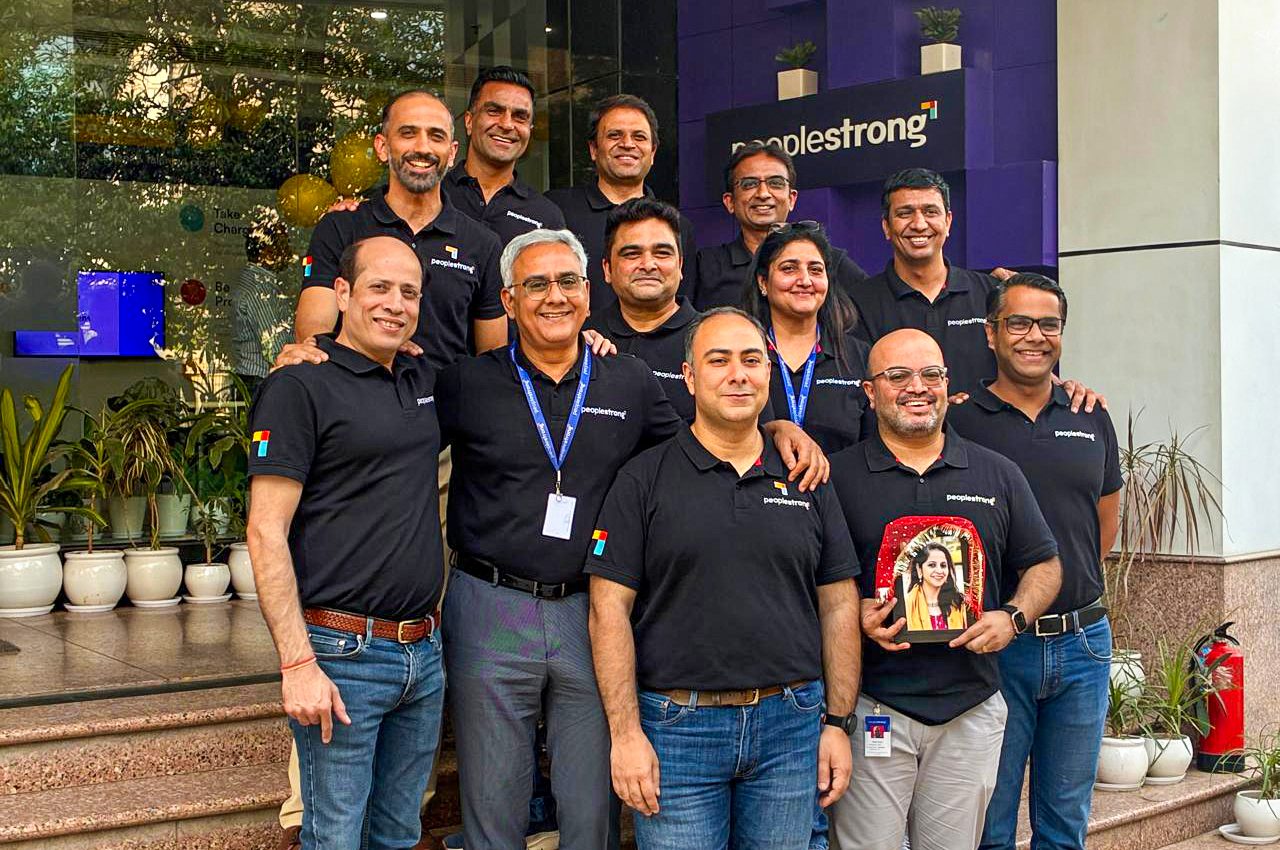Attracting top talent and building strong teams is critical to business success.
That’s why you need a well-thought-out recruitment process that helps you find the right candidates for a job when needed.
Without an effective recruitment process, you may end up hiring poor-fit candidates who may leave the job soon after joining. Similarly, if you have a long or tedious process, you may lose good candidates because of poor candidate experience.
According to a survey, 72% of candidates who had a poor experience during the recruitment process write negative reviews. Such negative reviews could damage your employer’s reputation and stop good candidates from applying for jobs at your company.
So, how do you create an effective recruitment process for your organization?
Read on to find out. But first, let’s start with the basics.
What is the Recruitment Process?
The recruitment process involves finding and hiring candidates for a job. It involves everything from identifying a job vacancy to filling it with the right candidate.
Here is a flowchart showing the various steps involved in the process to help you get a visual overview.

This is an important process, one that determines the quality of employees an organization has. In the next section, we will discuss some of its benefits.
Importance and Benefits of an Effective Recruitment Process
No one understands the importance of an effective recruitment process more than the HR department of any organization.
Without a well-structured process, recruiters can waste a lot of time, effort, and money on unnecessary tasks. That’s why modern recruiters are now using recruitment technology for hiring to optimize the process.
Here are some of the key benefits of a well-defined and structured recruitment process.
Attracting Top Talent
One of the biggest benefits of having a streamlined recruitment process is that it helps you attract top talent.
Using a recruitment software solution, you can create perfect job descriptions that convey your company’s best features to potential candidates. Such solutions also offer skill suggestions and generative AI to create customized job descriptions for each role quickly.

Reducing Cost and Time-to-Hire
According to a HireRight survey, 30% of companies in the APAC region witnessed a higher-than-normal time-to-hire.
To put this in context, the average time-to-hire is 16.1 days in India, 24.7 days in China, and 25.4 days in Singapore, as per Glassdoor’s findings.
The longer your recruitment process goes on, the more it drains money and resources.
Using the right technology and tools, you can cut down on time and costs for your recruitment process. Our internal data suggests that you can reduce 30% screening time and 20% sourcing time using technology to help with the recruitment process.
Here are some ways in which recruitment software helps reduce time-to-hire:
- Autogenerating job descriptions using AI
- Quick candidate sourcing from multiple channels
- Bulk resume parsing and candidate matching to reduce screening time
- Automated background verification of candidates
- Quick assessment test creation using templates and question suggestions
Improving Candidate Experience
If your recruitment process is long and not well-defined, you may end up wasting your and the candidates’ time. An effective recruitment process has clear steps and timelines to ensure that the whole experience is seamless for candidates.
Candidates find it frustrating to go through various tests and interviews without knowing the next steps or clear timelines. That’s why you need to clearly communicate how the process works and what candidates can expect at each step.
Using a recruitment solution can help you provide better candidate experiences by shortening and streamlining the recruitment process. It’s one of the biggest hiring trends, one that will revolutionize the entire recruitment process.
Ensuring Diversity and Inclusion
An effective recruitment process is unbiased and includes checks to ensure that recruiters don’t discriminate against certain candidates. To develop a fair recruitment process, you can create well-defined guidelines on diversity and inclusion.
Using AI for candidate sourcing and screening also helps remove human bias in recruiting. AI tools use keywords, skills, and other preset filters to find the best match candidates for a role.
You can ensure that these filters are not based on gender or ethnicity to make the process fair and inclusive.
Reducing Employee Turnover
Another advantage of a streamlined recruitment process is that it helps you provide a good candidate experience. This ensures that great candidates don’t reject your offer because of a long and tedious recruitment process.
Using recruitment technology and AI tools can help you deliver a better candidate experience and get better conversion rates for job offers. Companies that use PeopleStrong, for example, see a 45.5% conversion rate, which is really good.
An effective recruitment process also includes great onboarding, which helps engage employees from day one and reduces employee turnover caused by ineffective onboarding and poor employee induction.
7 Steps in the Recruitment Process
There are seven important steps involved in the recruitment process of companies in the MEA region. However, you can modify the process to suit your needs and add or reduce tasks at each step.
Here’s a simple seven-step recruitment process guide to get you started.
1. Identify the Hiring Needs
The first step in the recruitment process is to identify the hiring need and start the requisition process.
You need to identify the job vacancies and job specifications for each role. Here are some tips for identifying hiring needs:
- Track increases in workload for various teams and assess if additional employees are required for a project.
- Work closely with department and team heads to find the current gaps in various teams and identify roles for which you need to hire more people.
- If an employee leaves the company, get in touch with the team head to understand if a replacement is required.
Once you’ve identified a vacancy, start the requisition process within your recruitment software solution.
Here’s a detailed flowchart of how the process works.

Use predesigned requisition templates to create job requisitions 5x faster. This is an efficient way to simplify and speed up the job requisition process.
2. Create a Job Description
Once your requisition request is approved, you can start the recruitment process and create a detailed job description. Alternatively, you can leverage generative AI to autogenerate detailed job descriptions.

Here are some things to include in your job descriptions to make them more useful:
- Designation and a brief description
- Preferred educational background
- Years of experience required
- Seniority of position—entry level, mid-senior level, etc.
- Detailed roles and responsibilities
- On-site, hybrid, or remote role
- Necessary and good-to-have technical skills and certifications
- Compensation details
Here are some additional tips to attract the top talent through your job descriptions:
- List the employee benefits you offer, such as health or life insurance.
- Showcase the perks of working with your company, such as flexible work hours.
- Highlight any awards or recognition your company has received that makes it a great place to work.
3. Make a Recruitment Plan and Post the Job
At this stage of the recruitment process, you need to decide which channels you’ll use for sourcing candidates. Your recruitment plan should also include your hiring timeline and budget.
You can consider both internal and external sources for recruitment.
- Internal sources include sourcing employees from other teams that are fit for the role or promoting employees to fill a position.
- External sources include job boards, social media platforms like LinkedIn, your company’s website, job fairs, and more.
Choose the channels and post jobs. Use recruitment technology with job board integration capabilities to integrate job listings across various channels. Many recruitment software solutions also provide skill recommendations to help you create job listings faster.
Check out the following example, where you can see all jobs posted by your company at a glance, in a unified view.

4. Screen the Candidates
The recruitment screening process is crucial to the overall recruitment process as it helps weed out candidates who are not a good fit for the role.
At this stage, the recruiters need to sift through hundreds of job applications to find the best candidates for the role. Using AI-powered tools that offer resume parsing and candidate matching features, you can simplify the process.
Using AI tools helps recruiters save as much as 30% of the time they’d have spent on candidate screening.
Here are some tips to streamline your screening process:
- Use AI for resume parsing to quickly filter out irrelevant applications.
- Conduct an online profile search to asses if a candidate is the right fit for your organization.
- Conduct phone or online screening using a prescreening questionnaire. Leverage PeopleStrong’s Criteria-To-Qualify prescreening questions to create tests that filter out candidates who do not match the basic criteria.

- Use a prerecorded interview video and a quick online skill test to asses if a candidate has the essential skills required for the job.
- Conduct thorough background screening using specialized software to find discrepancies in education, experience, and other areas.
A HireRight survey found that 66% of employers in the APAC region find discrepancies in candidates’ educational backgrounds. So make sure you don’t skip this, as it will help you forward only the best-fit candidates to the next stage in the recruitment process.
Suggested Read: A Complete Guide to Recruitment Screening Process
5. Conduct Interviews and Tests
This is the most crucial stage in the recruitment process where you test the various candidates on their technical skills, soft skills, and culture fit. It’s commonly known as the selection process.
At this stage, the department heads and team heads get involved in the process and conduct detailed tests and interviews.
Here are some tips to do this right:
- Create detailed skill assessment tests that help you identify highly skilled candidates. To make the process faster, leverage recruitment software solutions that offer plug-in assessments to save you time and effort.
- Choose the right interview panel to test candidates on various aspects. Make sure someone from the team for which you’re hiring is present.
- When conducting interviews, be polite and respectful, even if the candidate is not skilled or fails to answer questions.
- Clearly communicate the timelines for the various tests and interviews in the selection process. Use WhatsApp communication, email, or other easy ways to share updates and keep the candidates informed.

- Be thorough with your questions and add specific questions that are relevant to the role. Refrain from asking generic questions that most people are probably prepared for and have scripted answers for.
6. Make the Final Decision and Job Offer
This is the penultimate step in the recruitment process. Here, you evaluate your choice, check the references provided by a candidate, and make an offer.
One key challenge that recruiters in the APAC region face is candidates rejecting the offer if a remote work option is not offered.

To avoid this, create detailed and lucrative job offers that match a candidate’s expectations. Make sure you leave room for negotiation and provide an open communication channel for further discussion.
Here are some details you should include in your job offers:
- Job title and expectations
- Date of joining
- Working days and regular business hours
- Policy regarding working from home and flexible working hours
- Compensation and benefits
- Any necessary conditions for employment, such as a criminal record check or drug test
- If there’s a probationary period, clearly mention the details
Also, revamp your compensation strategies to ensure that most candidates accept your job offers.
If you’re hiring for remote roles, use this remote hiring and onboarding checklist to ensure you make your remote employees feel welcome.
7. Hire and Onboard the Employees
Once an offer is accepted, you should not wait for the joining date to introduce and welcome new employees into your company.
Instead, start the onboarding process by providing them access to your company’s candidate portal. This portal should allow them to upload all documents for verification.

Here are some other resources you should provide to new employees:
- Presentations or videos introducing them to your company’s culture and values.
- Stories of existing employees and their experiences with the company.
- A more in-depth guide on all the perks of working with the organization.
The goal is to make them excited about joining the company.
Use a good onboarding software solution that streamlines the process and offers AI tools to create role-based onboarding journeys.
Conduct pre-employment screening and document verification to ensure everything’s in order, and then have the candidates sign an employment contract to make it official.
After a new employee officially joins the company, you can provide more resources through the onboarding portal. This includes access to tools and resources they will need to do their work well and training sessions that are scheduled for the induction process.
Conclusion
There you have it—a complete recruitment process guide to finding top talent and delivering a great candidate experience.
Use this guide to attract and recruit the best candidates for a job. Ensure that you also engage and retain top talent using effective onboarding and induction processes.
Looking for the right technology to supercharge your recruitment efforts and streamline your recruitment process?
Use PeopleStrong Recruit to leverage technology at every step of the process to save time and money. All the best!
FAQs
What are the common challenges HRs face in the recruitment process?
Some of the biggest challenges HRs face are:
- Receiving too many applications and spending hours of time sorting through them to find the best-fit candidates.
- Ensuring that there’s no subjective bias while screening or interviewing candidates for a role.
- Delivering a consistently great candidate experience throughout the recruitment process.
- Verifying that the information provided by candidates in their resumes is correct and that they don’t have a criminal record.
- Reducing the time-to-hire and shortening the recruitment process to include only the most important and necessary steps.
All of these challenges can be overcome by using
What role does technology play in modern recruitment processes?
Recruitment technology has evolved to the point where it will become an inherent part of the hiring process, not just an option but a necessity.
Here are some ways in which technology helps:
- Create detailed job descriptions in seconds, and it automatically suggests the right skills and keywords to add to them based on the role’s requirements.
- Managing various job listings on different channels and providing easy ways to stay on top of things.
- Sorting through hundreds of applications in seconds and using AI to suggest the best-fit candidates.
- Verifying candidates’ educational, employment, criminal, and other records to ensure the details match what they’ve claimed in their resumes.
- Simplifying skill assessments by creating questions and streamlining the scheduling process.
Who is in charge of the recruitment process?
The hiring manager is the one who’s in charge of the recruitment process. This can be a manager of the team for which you’re hiring or a department head.
In some cases, the HR team member who is appointed as the person in charge of hiring for a specific role could also be involved. The respective team’s managers and leaders will still be involved, but the HR person will be the one overseeing everything from start to finish.










